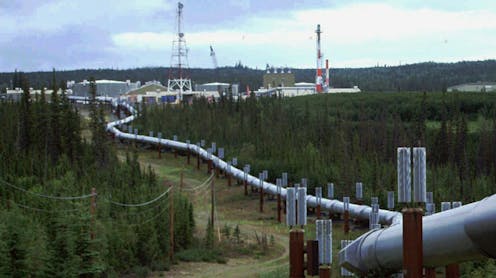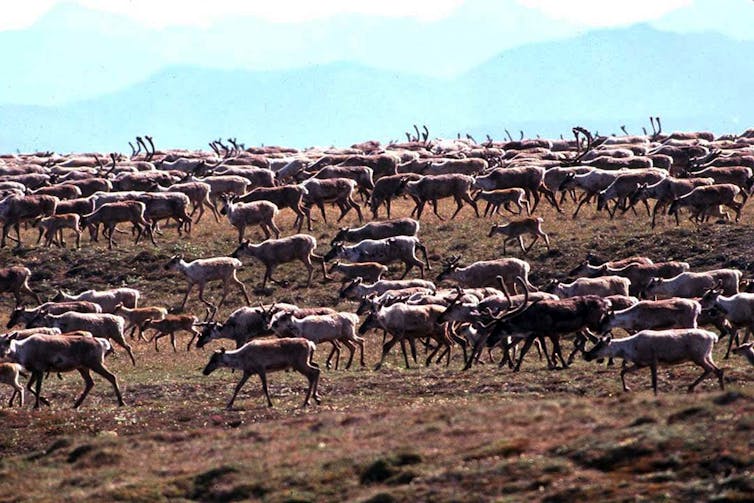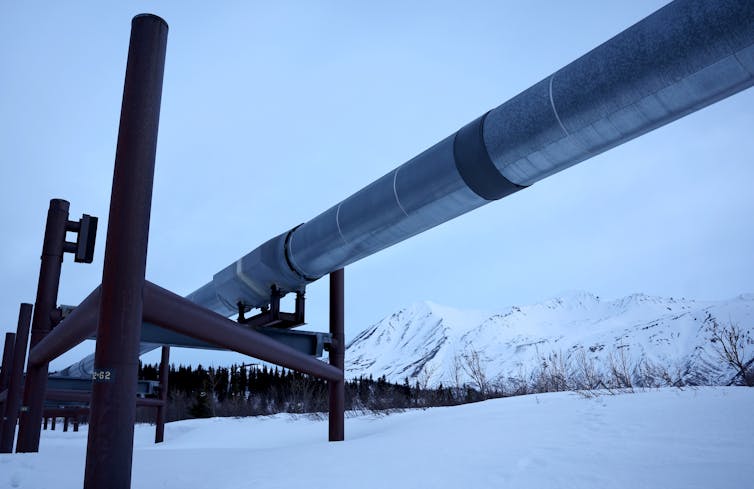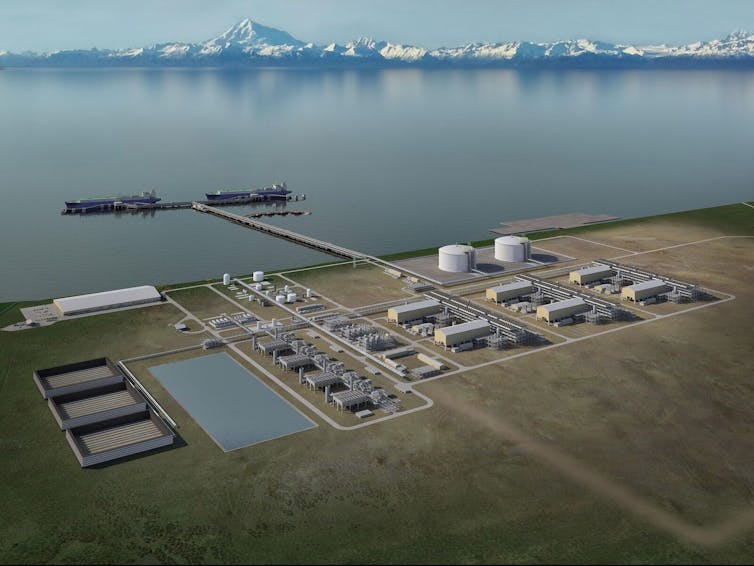White House plans for Alaskan oil and gas face some hurdles – including from Trump and the petroleum
Donald Trump says he is a big fan of oil and gas. His actions may not be of great interest to the industry. And the results may not be what he says he wants.

The second Trump administration has launched the next stage in the half-century-long battle between commerce and conservation over Alaskan oil and gas development. But its moves are delivering a mixed message to the petroleum industry.
The administration has opened – or reopened – large swaths of government land in Alaska to oil and gas drilling, though only some of those opportunities have drawn much commercial interest in recent years. And an 800-mile pipeline across Alaska that the administration says it supports is not yet funded, and other administration policies risk turning off prospective partners.
President Donald Trump says he wants to grow oil and gas production and advance the goal of what he calls U.S. “energy dominance.” The White House says that term means both reducing the amount of energy imported from other countries and increasing the amount of energy exported from the U.S., especially to allies.
The U.S. is already the world’s largest producer and exporter of natural gas as well as the largest producer of crude oil. And the nation’s oil industry boomed under the Biden administration. However, the U.S. does import an average of over 6 million barrels per day of crude oil, most of it from Canada.
Trump’s efforts seek to boost U.S. production to still greater heights by expanding access to areas for drilling and building related infrastructure. But as a former petroleum geoscientist and industry observer, I would suggest his various actions, taken as a whole, may have more limited effects than he seems to hope.
Returned to leasing
In one of his first executive orders after retaking office on Jan. 20, 2025, Trump declared that the U.S. would develop Alaska’s petroleum resources “to the fullest extent possible.”
The Biden administration had banned oil leasing in three areas of Alaska. One was all but 400,000 acres in the coastal plain portion of the Arctic National Wildlife Refuge. Another was a 13-million-acre swath of the National Petroleum Reserve-Alaska, a massive parcel of federal land west of the refuge. The third area was 44 million acres of the offshore coastal portion of the northern Bering Sea, based on concerns for tribal rights and the migration routes of marine mammals.
Trump moved quickly to reverse all these bans, describing them as an “assault on Alaska’s sovereignty and its ability to responsibly develop (its) resources for the benefit of the Nation.” And Trump went farther, expanding the available land by an additional 6 million acres in the petroleum reserve and another 1.1 million acres of the wildlife refuge.
All those areas are home to many different types of wildlife, as well as Indigenous groups.

The view of industry
For the petroleum industry, I expect these actions are both welcome and irrelevant. Reopening the northeastern portion of the petroleum reserve creates a real opportunity: Exploration has found a significant amount of oil and gas in that area, and indications are that there may be more yet to discover.
But prospects on the land in the wildlife refuge and the shallow waters of the Bering Sea are not likely of much interest to drilling companies unless oil prices rise significantly from their levels in early 2025. There is no established production in either area at present. And, though the refuge has oil and gas potential, there are no roads or pipelines, and Arctic drilling is especially expensive.
In fact, the last two attempts by the government to lease oil development rights in the wildlife refuge drew very little interest. In 2020, the first Trump administration teamed with Republicans in Congress to overcome long-standing legal and political opposition to leasing in the refuge. But the 2021 lease sale was a bust, with none of the top oil producers in the state participating.
A second round of bidding, in January 2025, received no interest at all from oil companies.

Pipe dreams that could come true
A strong gain for the petroleum industry would be a major new pipeline to carry natural gas more than 800 miles south from the Prudhoe Bay area on the Arctic coast to a port near Anchorage on south-central Alaska’s Cook Inlet.
The idea has its own decades-long history, and has been both pushed forward and set back over the years by changing economics, government plans, and tribal interest and opposition.
The main challenge is that there is no way to transport natural gas off the North Slope. Since drilling began in the late 1970s, some has been used locally for heating and running equipment, with the vast majority being reinjected into oil reservoir rock to help maintain oil production.
Rising demand and elevated prices in Asia, however, suggest the project could be profitable, despite the current cost estimate of US$44 billion. Project plans indicate most of it would go to build a liquefied natural gas export terminal near Anchorage, with the rest spent to construct an 807-mile pipeline paralleling the existing Trans-Alaska Pipeline, and a plant at Prudhoe Bay that would capture carbon from the atmosphere, compress it and inject it into oil-producing reservoirs to boost production.
The pipeline is designed to carry 3.3 billion cubic feet of natural gas each day, which would make it one of the largest pipelines in North America. The export terminal, to be built near the town of Nikiski on Cook Inlet, would have a capacity of roughly 1 trillion cubic feet per year, enough to heat about 15 million homes for a year.
The pipeline could take as little as two to three years to build, but the terminal and carbon-capture plant would take longer – five years or so. The exports from Alaska could go to other ports in the U.S., but they could also fetch higher prices in Japan, South Korea, Taiwan and possibly China.

A wrench in the works
Most of the permits needed for the pipeline-and-export-terminal project have been secured by the Alaska Gasline Development Corporation, a company created by the state of Alaska to build the project.
However, no company or foreign government has yet agreed to foot the bill, and despite the support of the Trump White House, there’s no indication the federal government will do so either.
The Trump administration has also created a new barrier to the project. Its sweeping tariffs and the resulting trade war crashed prices in the global oil and gas market in early April 2025.
In addition, uncertainty about the permanence of tariffs or other restrictions on international trade are now widespread and directly affect the oil industry. Lower gas and oil prices and less stability make any project less attractive.
It’s true that Trump exempted oil and gas from his most recent tariffs. But that matters less than the broader effect the trade war is already having, with analysts projecting it is driving the global economy toward recession. Less economic activity means less demand for oil and gas, and therefore less incentive for companies to drill new wells and build new pipelines.
To top everything off, the White House slapped heavy tariffs on Japan, South Korea and Taiwan, the very countries that might be inclined to help fund the pipeline project. Even before the trade war, they were hesitant about supporting it. The potential suspension, or reinstatement, or adjustment of tariffs is not likely to help them view the situation as more stable.
Those who favor oil and gas development in Alaska may be wondering whether the president is truly on their side. It remains to be seen whether their hopes might end up a casualty of White House economic policy.
Scott L. Montgomery does not work for, consult, own shares in or receive funding from any company or organization that would benefit from this article, and has disclosed no relevant affiliations beyond their academic appointment.
Read These Next
From FIFA to the LA Clippers, carbon offset scandals are exposing the gap between sports teams’ gree
There are better ways for teams to cut their climate impact.
From early cars to generative AI, new technologies create demand for specialized materials
The mass adoption of new technologies drives demand for rare and complex materials used in their manufacture.
Doulas play essential roles in reproductive health care – and more states are beginning to recognize
Doulas bring a holistic, person-centered approach that can improve birth outcomes and lower overall…





